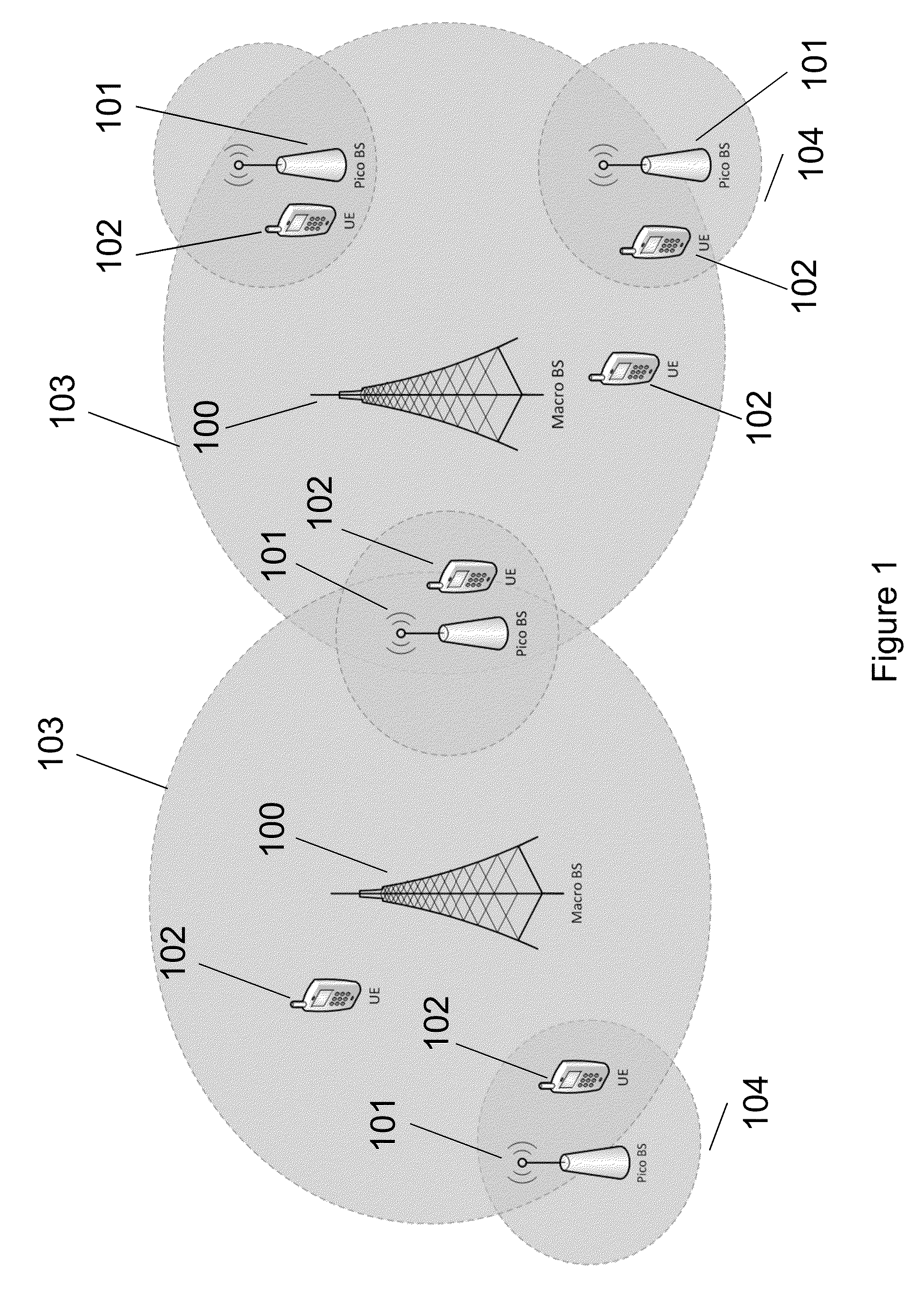ABS-based Method for Inter Cell Interference Coordination in LTE-Advanced Networks
a technology of inter cell interference and abs, applied in the field of long-term evolution-advanced (ltea) networks, can solve the problems of severe interference of the macro bss in the service of the pico bss
- Summary
- Abstract
- Description
- Claims
- Application Information
AI Technical Summary
Benefits of technology
Problems solved by technology
Method used
Image
Examples
Embodiment Construction
[0023]ABSs can be configured by the macro BSs to reduce the interference to the pico UEs and thus improve their throughput performance in a LTE-A network. The throughput of the pico UEs increases with a larger number of ABSs configured in each frame. However, increasing the number of ABSs in a frame will reduce the available subframes for the macro UEs and thus decrease their throughput. Therefore, exemplary embodiments attempt to choose appropriate ABS ratios for the macro BSs, which is defined as the number of ABSs over the total number of subframes in a frame, such that the throughputs of macro and pico UEs are well balanced and the overall system throughput is optimized.
[0024]Besides the ABS ratio, the ABS pattern (i.e., the positions or subframe indices of the ABSs in each frame) is also considered to coordinate the interference from the macro BSs to the pico UEs. FIG. 4 illustrates a scenario where a pico UE 404 associated with a pico base station (BS) 405 has two strong inter...
PUM
 Login to View More
Login to View More Abstract
Description
Claims
Application Information
 Login to View More
Login to View More - R&D
- Intellectual Property
- Life Sciences
- Materials
- Tech Scout
- Unparalleled Data Quality
- Higher Quality Content
- 60% Fewer Hallucinations
Browse by: Latest US Patents, China's latest patents, Technical Efficacy Thesaurus, Application Domain, Technology Topic, Popular Technical Reports.
© 2025 PatSnap. All rights reserved.Legal|Privacy policy|Modern Slavery Act Transparency Statement|Sitemap|About US| Contact US: help@patsnap.com



